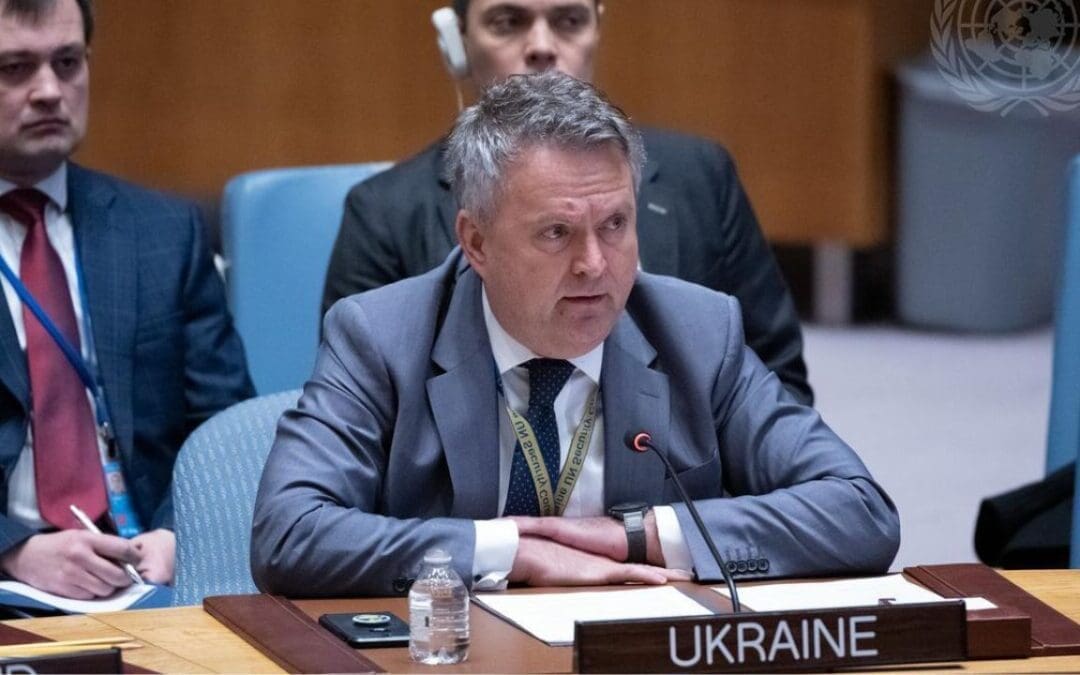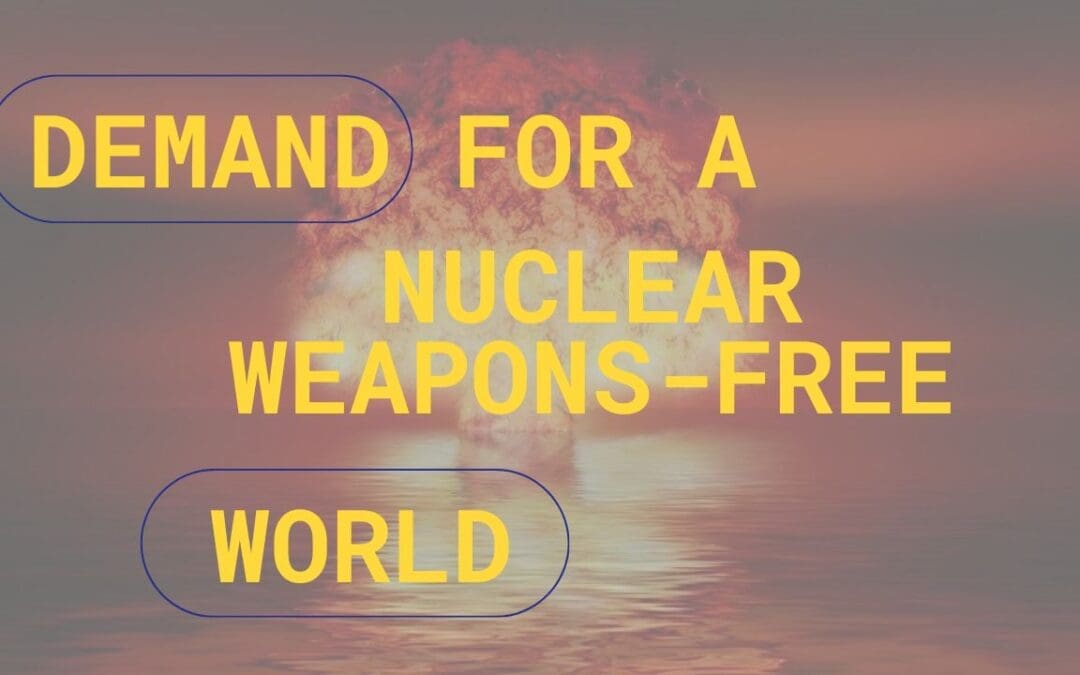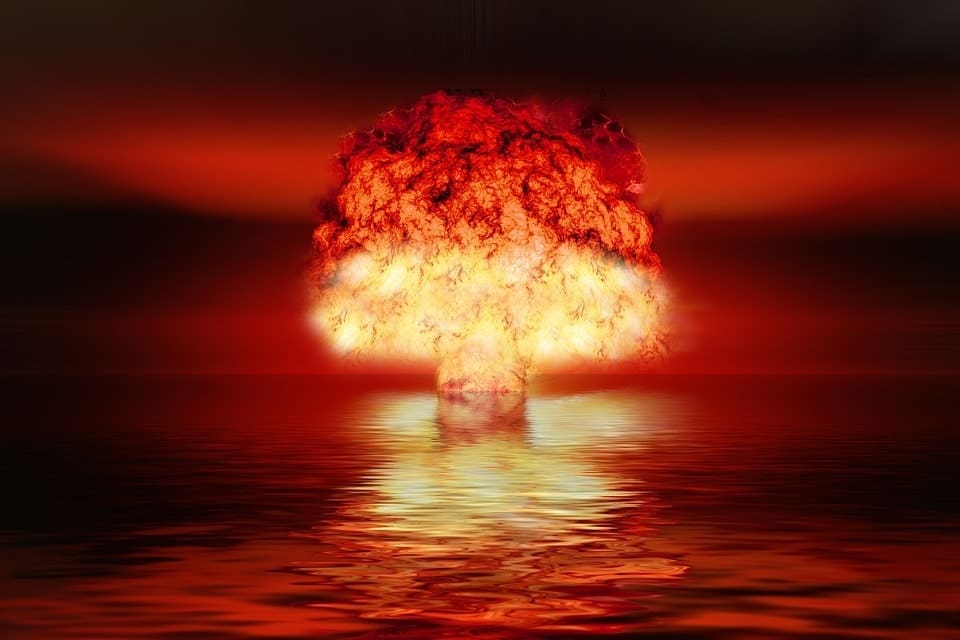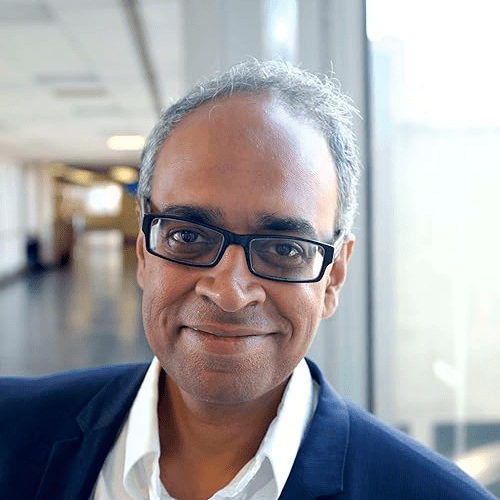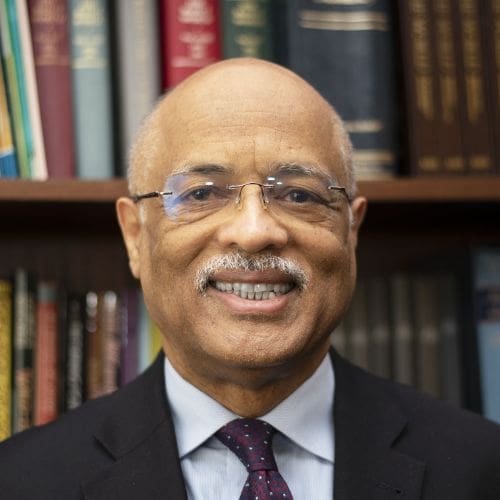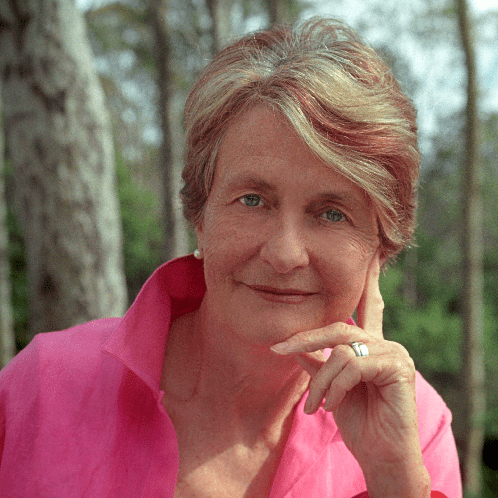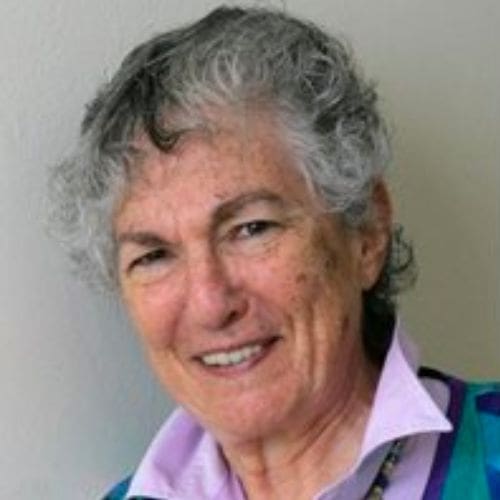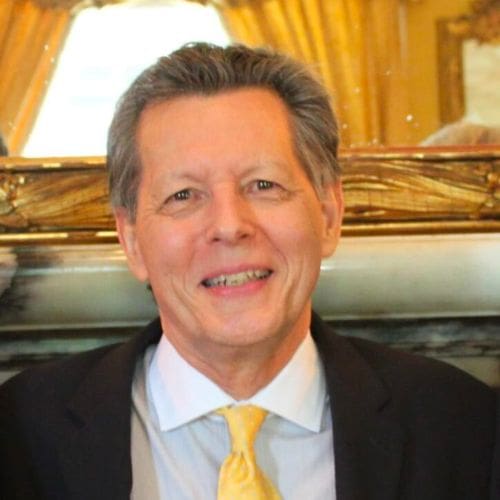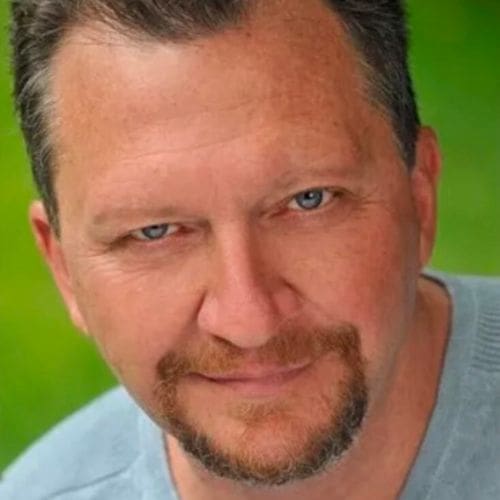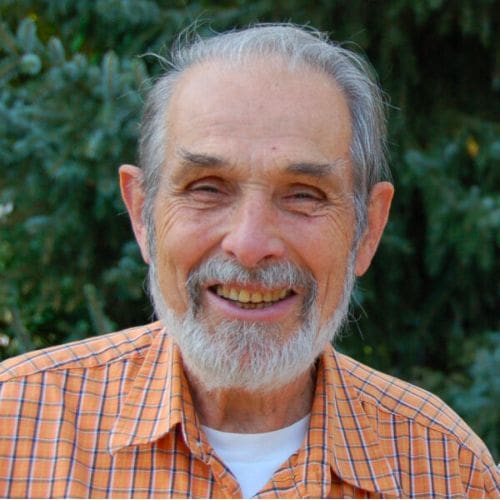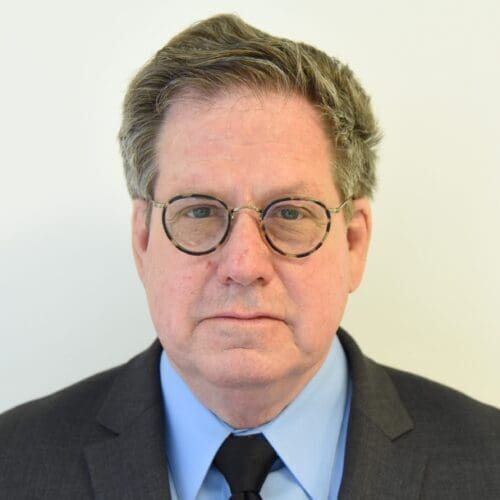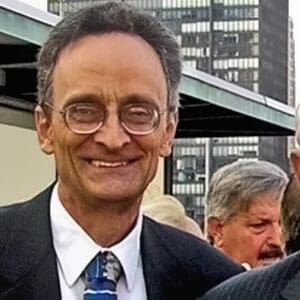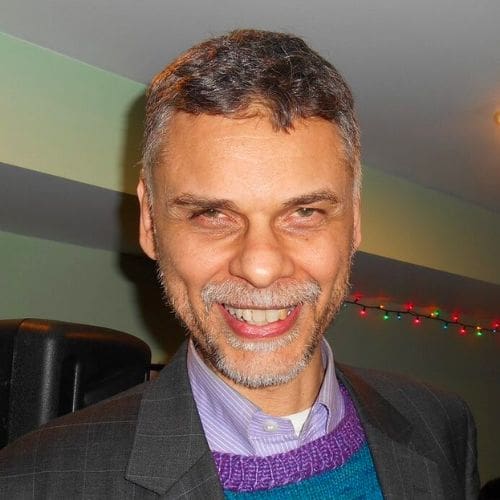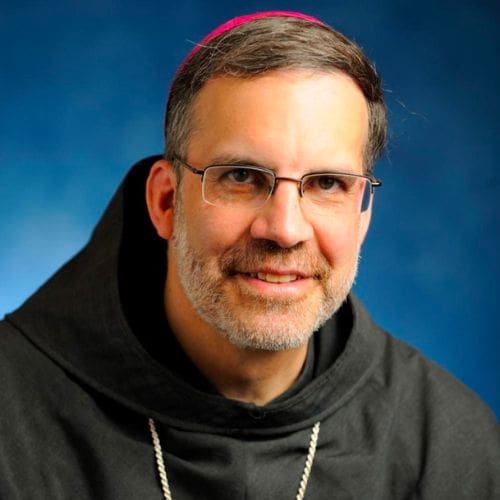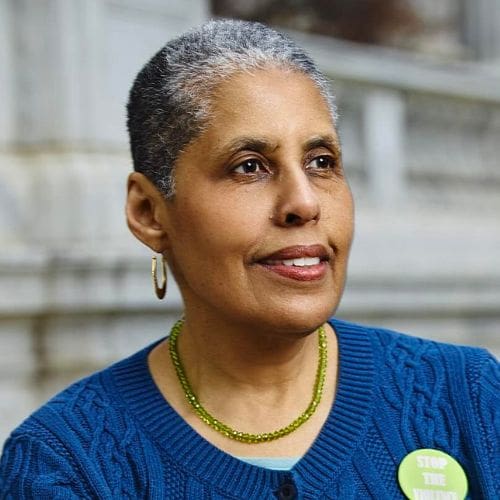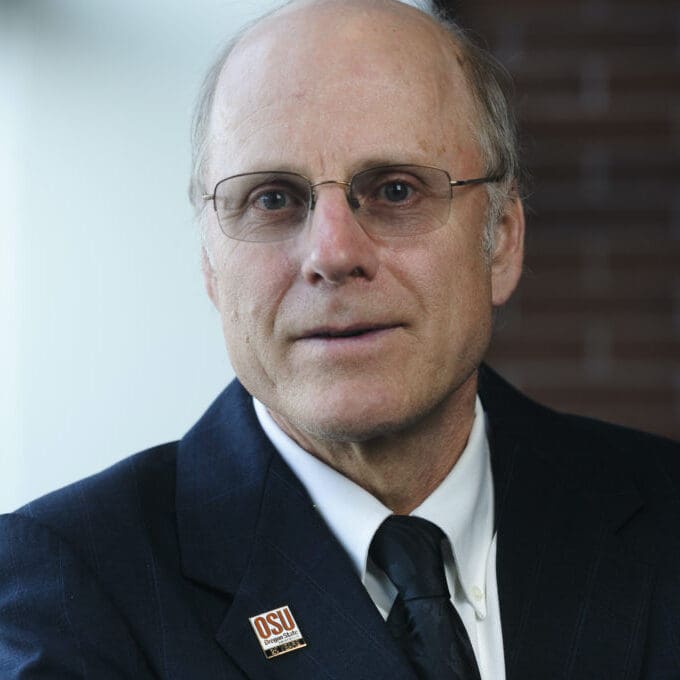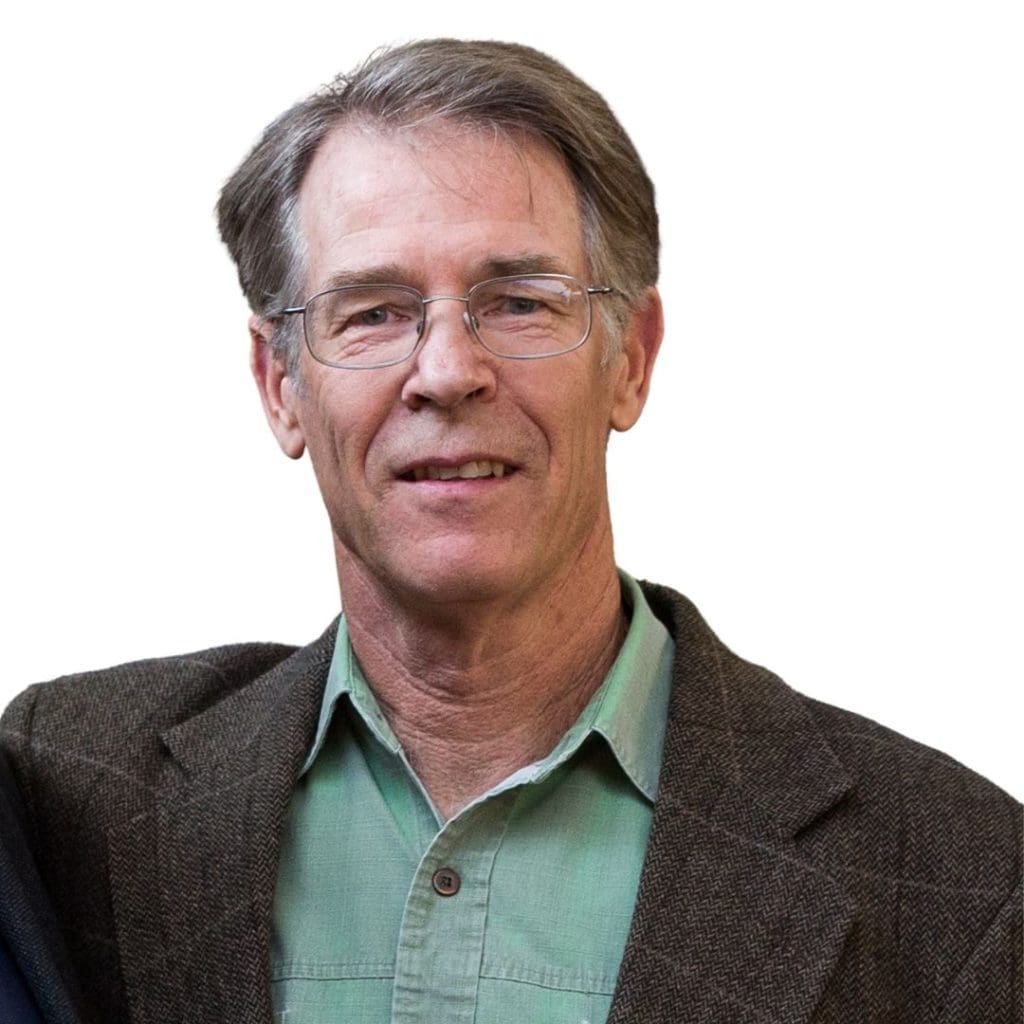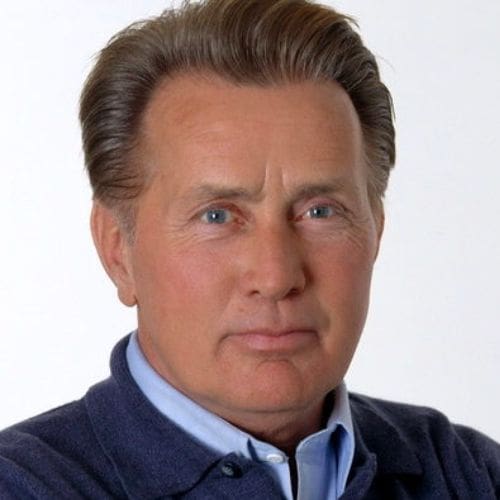
by Lawrence Wittner | Dec 14, 2023 | Peace
Although the unfolding humanitarian catastrophe in Gaza has captured the world’s horrified attention, the war in Ukraine has had even more terrible consequences. Grinding on for nearly two years, Russia’s massive military invasion of that country has taken hundreds of thousands of lives, created millions of refugees, wrecked Ukraine’s civilian infrastructure and economy, and consumed enormous financial resources from nations around the world.
And yet, despite the Ukraine War’s vast human and economic costs, there is no sign that it is abating. Russia and Ukraine are now bogged down in very bloody military stalemate, with about a fifth of Ukraine’s land occupied and annexed by Russia.
Meanwhile, polls show that an overwhelming majority of Ukrainians remain determined to continue the struggle to free all of Ukraine from Russian captivity. Indeed, an opinion survey in the fall of 2023 found that 80 percent of Ukrainians polled believed that under no circumstances should Ukraine give up any of its territory.
Similarly, in Russia, polls have found that a majority of the public appears content with the Putin regime’s military conquest of Ukraine and is opposed to any peace settlement that would relinquish Russian control of conquered Ukrainian land. Of course, the accuracy of Russian polls on the Ukraine War remains deeply suspect, for professing opposition to the war could easily lead to arrest, as it did for 20,000 Russians in 2022. Perhaps for this reason, numerous Russians polled refused to answer the question of where they stood on the war. One participant responded: “Thank you for the opportunity not to testify against myself.” In any case, in increasingly authoritarian Russia, public sentiment against war seems unlikely to alter the Putin administration’s determination to triumph on the battlefield.
Admittedly, in the United States, the major supplier of military and economic aid to beleaguered Ukraine, some developments point to declining enthusiasm for that role. The Republican Party has revived its 1930s policy (once termed “isolationism”) of appeasing military aggression by rightwing dictatorships, while leftists with an anti-American slant see a Russian victory as a useful way of somehow destroying “U.S. imperialism.” Nonetheless, unless Donald Trump and his MAGA followers sweep into power in 2024, it seems unlikely that the U.S. government or its NATO partners will entirely abandon Ukraine to a future under the jackboot of Russian military occupation.
Given these obstacles, is there a way to secure a just settlement of the Ukraine War?
There is, but it will take some creative action by the United Nations, the global organization that has been authorized to enforce international security.
Since the beginning of the Russian invasion of Ukraine on February 24, 2022, the overwhelming majority of the world’s nations have repeatedly used their participation in the UN General Assembly to condemn the Russian invasion and to call for a just peace in Ukraine. For example, on the eve of the one-year anniversary of the war, the General Assembly, by a vote of 141 nations to 7 (with 32 abstentions), demanded that Russia “immediately, completely, and unconditionally” withdraw its military forces from Ukraine and called for a “cessation in hostilities” and a “comprehensive, just and lasting peace” based on the principles enshrined in the UN Charter. The UN Charter, of course, constitutes international law and bans “the threat or use of force against the territorial integrity or political independence of any State.”
Even so, it is the UN Security Council that is tasked with enforcing international security, and Russia has used its veto in that UN entity to block UN action to end the Ukraine War.
The paralysis of the UN Security Council, however, need not continue. As Louise Blais, Canada’s ambassador to the United Nations from 2017 to 2021, has recently pointed out, Article 27 (3) of the UN Charter states that a party to a dispute before the Security Council shall abstain from voting in connection with the dispute. But, when it came to the Security Council’s votes on the Ukraine War, as Blais noted, “none of the 10 elected Security Council members had the courage, vision or backing to put forward a resolution” demanding abstention. According to Blais, the unwillingness of the four other veto-wielding members (Britain China, France, and the United States) to avoid a crippling Russian veto and, thereby, empower the Security Council to act, reflected their “zero interest in supporting such a move for fear it would limit their own power in the future.”
But there is ample precedent for limiting the veto in this fashion. The United Nations has a history of veto-wielding nations abstaining from Security Council voting when they are parties to a dispute. As Blais observes, between 1946 and 1952, Security Council members “regularly adhered to the obligatory abstention rule.” Only in later years did the five permanent Security Council members curtail the application of this practice.
In short, based on both international law and precedent, the UN Security Council has the authority to impose a settlement of the disastrous Ukraine War. What kinds of international action this would require would need to be determined by the world organization, just as the final terms of a peace agreement would ultimately need to be accepted by the contending parties. But, given the overwhelming support in the UN General Assembly for the withdrawal of Russian military forces from Ukraine and for a lasting peace agreement, such a peace settlement is likely to be a just one.
At the least, this would be a far better method of dealing with international conflict than the current full-scale war currently raging in Ukraine. And it could serve as a model for resolving other intractable disputes, such as the brutal Israel-Palestine conflict, as well.
This article was originally published in International Physicians for the Prevention of Nuclear War’s Peace and Health Blog
Image Credits: UN Photo/Evan Schneider

by Lawrence Wittner | Jul 13, 2023 | Disarmament
The July 21, 2023 theatrical release of the film Oppenheimer, focused on the life of a prominent American nuclear physicist, should help to remind us of how badly the development of modern weapons has played out for individuals and for all of humanity.
Oppenheimer’s Rise and Fall
Based on the Pulitzer Prize-winning biography, American Prometheus, written by Kai Bird and the late Martin Sherwin, the film tells the story of the rise and fall of young J. Robert Oppenheimer, recruited by the U.S. government during World War II to direct the construction and testing of the world’s first atomic bomb at Los Alamos, New Mexico. His success in these ventures was followed shortly thereafter by President Truman’s ordering the use of nuclear weapons to destroy Hiroshima and Nagasaki.
During the immediate postwar years, Oppenheimer, widely lauded as “the father of the atomic bomb,” attained extraordinary power for a scientist within U.S. government ranks, including as chair of the General Advisory Committee of the new Atomic Energy Commission (AEC).
But his influence ebbed as his ambivalence about nuclear weapons grew. In the fall of 1945, during a meeting at the White House with Truman, Oppenheimer said: “Mr. President, I feel I have blood on my hands.” Incensed, Truman later told Assistant Secretary of State Dean Acheson that Oppenheimer had become “a crybaby” and that he didn’t want “to see that son of a bitch in this office ever again.”
Oppenheimer was also disturbed by the emerging nuclear arms race and, like many atomic scientists, championed the international control of atomic energy. Indeed, in late 1949, the entire General Advisory Committee of the AEC came out in opposition to the U.S. development of the H-bomb―although the president, ignoring this recommendation, approved developing the new weapon and adding it to the rapidly growing U.S. nuclear arsenal.
In these circumstances, figures with considerably less ambivalence about nuclear weapons took action to purge Oppenheimer from power. In December 1953, shortly after becoming chair of the AEC, Lewis Strauss, a fervent champion of a U.S. nuclear buildup, ordered Oppenheimer’s security clearance suspended. Anxious to counter implications of disloyalty, Oppenheimer appealed the decision and, in subsequent hearings before the AEC’s Personnel Security Board, faced grueling questioning not only about his criticism of nuclear weapons, but about his relationships decades before with individuals who had been Communist Party members.
Ultimately, the AEC ruled that Oppenheimer was a security risk, an official determination that added to his public humiliation, completed his removal from government service, and delivered a shattering blow to his meteoric career.
The Threat to Human Survival
Of course, the development of nuclear weapons had far broader consequences than the downfall of J. Robert Oppenheimer. In addition to killing more than 200,000 people and injuring many more in Japan, the advent of nuclear weaponry led nations around the world to enter a fierce nuclear arms race. By the 1980s, spurred on by conflicts among the major powers, 70,000 nuclear weapons had come into existence, with the potential to destroy virtually all life on earth.
Fortunately, a massive grassroots citizens campaign emerged to counter this drive toward a nuclear apocalypse. And it succeeded in pressuring reluctant governments into an array of nuclear arms control and disarmament treaties, as well as unilateral actions, to reduce nuclear dangers. As a result, by 2023 the number of nuclear weapons had declined to roughly 12,500.
Nevertheless, in recent years, thanks to a sharp decrease in citizen activism and increase in international conflict, the potential for nuclear war has dramatically revived. All nine nuclear powers (Russia, the United States, China, Britain, France, Israel, India, Pakistan, and North Korea) are currently engaged in upgrading their nuclear arsenals with new production facilities and new, improved nuclear weapons. During 2022, these governments poured nearly $83 billion into this nuclear buildup. Public threats to initiate nuclear war, including those by Donald Trump, Kim Jong Un, and Vladimir Putin, have become more common. The hands of the Doomsday Clock of the Bulletin of the Atomic Scientists, established in 1946, now stand at 90 seconds to midnight―the most dangerous setting in its history.
Not surprisingly, the nuclear powers display little interest in further action for nuclear arms control and disarmament. The two nations possessing some 90 percent of the world’s nuclear weapons―Russia (with the most) and the United States (not far behind)―have pulled out of nearly all such agreements with one another. Although the U.S. government has proposed extending the New Start Treaty (which limits the number of strategic nuclear weapons) with Russia, Putin reportedly responded this June that Russia would not engage in any nuclear disarmament talks with the West, commenting: “We possess more weaponry of such sort than the NATO countries. They know that and are always trying to persuade us to start negotiations on reduction. Nuts to them . . . as our people say.” The Chinese government―whose nuclear arsenal, while growing substantially, still ranks a distant third in numbers―has stated that it sees no reason for China to engage in any nuclear arms control talks.
The Demand for a Nuclear Weapons-Free World
To head off a looming nuclear catastrophe, non-nuclear nations have been championing the Treaty on the Prohibition of Nuclear Weapons (TPNW). Adopted by an overwhelming vote of nations at a UN conference in July 2017, the TPNW bans developing, testing, producing, acquiring, possessing, stockpiling, and threatening to use nuclear weapons. The treaty went into force in January 2021 and―though opposed by all the nuclear powers―it has thus far been signed by 92 nations and ratified by 68 of them. Brazil and Indonesia are likely to ratify it in the near future. Polls have found that the TPNW has substantial support in numerous countries, including the United States and other NATO nations.
Numerous organizations are working to create a nuclear weapons-free world, including Citizens for Global Solutions, Peace Action, and Physicians for Social Responsibility in the United States and the International Campaign to Abolish Nuclear Weapons, the International Peace Bureau, Parliamentarians for Nuclear Nonproliferation and Disarmament (PNND), and Parliamentarians for Global Action on the international level.
There does remain some hope, then, that the nuclear tragedy that engulfed J. Robert Oppenheimer and has long threatened the survival of world civilization can still be averted.

by Lawrence Wittner | Jun 10, 2023 | Disarmament
It should come as no surprise that the world is currently facing an existential nuclear danger. In fact, it has been caught up in that danger since 1945, when atomic bombs were used to annihilate the populations of Hiroshima and Nagasaki.
The Situation Today
Today, however, the danger of a nuclear holocaust is probably greater than in the past. There are now nine nuclear powers―the United States, Russia, Britain, France, China, Israel, India, Pakistan, and North Korea―and they are currently engaged in a new nuclear arms race, building ever more efficient weapons of mass destruction. The latest entry in their nuclear scramble, the hypersonic missile, travels at more than five times the speed of sound and is adept at evading missile defense systems.
Furthermore, these nuclear-armed powers engage in military confrontations with one another―Russia with the United States, Britain, and France over the fate of Ukraine, India with Pakistan over territorial disputes, and China with the United States over control of Taiwan and the South China Sea―and on occasion issue public threats of nuclear war against nuclear nations. In recent years, Vladimir Putin, Donald Trump, and Kim Jong-Un have also publicly threatened non-nuclear nations with nuclear destruction.
Little wonder that, in January 2023, the editors of the Bulletin of the Atomic Scientists set the hands of their famous “Doomsday Clock” at 90 seconds before midnight, the most dangerous setting since its creation in 1946.
A Reprieve, But Only a Temporary One
Until fairly recently, this march to Armageddon was disrupted, for people around the world found nuclear war a very unappealing prospect. A massive nuclear disarmament campaign developed in many countries and, gradually, began to force governments to temper their nuclear ambitions. The result was banning nuclear testing, curbing nuclear proliferation, limiting development of some kinds of nuclear weapons, and fostering substantial nuclear disarmament. From the 1980s to today, the number of nuclear weapons in the world sharply decreased, from 70,000 to roughly 13,000. And with nuclear weapons stigmatized, nuclear war was averted.
But successes in rolling back the nuclear menace undermined the popular struggle against it, while proponents of nuclear weapons seized the opportunity to reassert their priorities. Consequently, a new nuclear arms race gradually got underway.
And What of the Future?
Even so, creating a nuclear-free world remains possible. Although an inflamed nationalism and the excessive power of military contractors are likely to continue bolstering the drive to acquire, brandish, and use nuclear weapons, there is a route out of the world’s nuclear nightmare.
We can begin uncovering this route to a safer, saner world when we recognize that a great many people and governments cling to nuclear weapons because of their desire for national security. After all, it has been and remains a dangerous world, and for thousands of years nations (and before the existence of nations, rival territories) have protected themselves from aggression by wielding military might.
The United Nations, of course, was created in the aftermath of the vast devastation of World War II in the hope of providing national security. But, as history has demonstrated, it is not strong enough to do the job―largely because the “great powers,” fearing that significant power in the hands of the international organization would diminish their own influence in world affairs, have deliberately kept the world organization weak. Thus, for example, the UN Security Council, which is officially in charge of maintaining international security, is frequently blocked from taking action by a veto cast by one its five powerful, permanent members.
But what if global governance were strengthened to the extent that it could provide national security? What if the United Nations were transformed from a loose confederation of nations into a genuine federation of nations, enabled thereby to create binding international law, prevent international aggression, and guarantee treaty commitments, including commitments for nuclear disarmament?
How a Federation of Nations Could End the Nuclear Menace
Nuclear weapons, like other weapons of mass destruction, have emerged in the context of unrestrained international conflict. But with national security guaranteed, many policymakers and most people around the world would conclude that nuclear weapons, which they already knew were immensely dangerous, had also become unnecessary.
Aside from undermining the national security rationale for building and maintaining nuclear weapons, a stronger United Nations would have the legitimacy and power to ensure their abolition. No longer would nations be able to disregard international agreements they didn’t like. Instead, nuclear disarmament legislation, once adopted by the federation’s legislature, would be enforced by the federation. Under this legislation, the federation would presumably have the authority to inspect nuclear facilities, block the development of new nuclear weapons, and reduce and eliminate nuclear stockpiles.
The relative weakness of the current United Nations in enforcing nuclear disarmament is illustrated by the status of the UN Treaty on the Prohibition of Nuclear Weapons. Voted for by 122 nations at a UN conference in 2017, the treaty bans producing, testing, acquiring, possessing, stockpiling, transferring, and using or threatening the use of nuclear weapons. Although the treaty officially went into force in 2021, it is only binding on nations that have decided to become parties to it. Thus far, that does not include any of the nuclear armed nations. As a result, the treaty currently has more moral than practical effect in securing nuclear disarmament.
If comparable legislation were adopted by a world federation, however, participating in a disarmament process would no longer be voluntary, for the legislation would be binding on all nations. Furthermore, the law’s universal applicability would not only lead to worldwide disarmament, but offset fears that nations complying with its provisions would one day be attacked by nations that refused to abide by it.
In this fashion, enhanced global governance could finally end the menace of worldwide nuclear annihilation that has haunted humanity since 1945. What remains to be determined is: Are nations ready to unite in the interest of human survival?

by Citizens for Global Solutions | Jun 4, 2023
An intergenerational dialogue on how global governance solutions can tackle existential threats
Description
This Q&A panel discussion, hosted by Citizens for Global Solutions (CGS), Youth Fusion, and World Federalist Movement – Institute for Global Policy (WFM-IGP), will consider how progress on environmental protection is hampered by armed conflict, nuclear threats, and the massive diversion of resources into weapons and war. In this webinar, we will explore the potential of common security and global governance to foster cooperation to more effectively address climate, peace, and disarmament issues. This intergenerational dialogue will bring together youthful energy and innovation with seasoned expertise and experience, actively engaging our audience to build stronger pathways to a peaceful and sustainable future.
Session I
Region: Americas/Europe/Africa/Middle East
Date: July 13, 2023 | Time: 12:00 PM -1:30 PM EST | 1600 – 1730 UTC | 1700 London | 1800 CET | 1900 Kenya
Register for Session 1 (Zoom)
Session 1 Speakers
- William (Bill) R. Pace (USA). Founder and Inaugural Convenor, Coalition for an International Criminal Court. Former Executive Director, World Federalist Movement-Institute for Global Policy (WFM-IGP). Co-founder, International Coalition for the Responsibility to Protect.
- Kehkashan Basu MSM (UAE/Canada). Founder-President, Green Hope Foundation. United Nations Human Rights Champion. Winner, 2016 International Children’s Peace Prize. Council Member, World Future Council. Former UNEP Global Coordinator for Children & Youth;
- Professor Juergen Scheffran (Germany) Professor of Integrative Geography. Chair of the Research Group Climate Change and Security, Center for Earth System Research and Sustainability, University of Hamburg. Principal author, The Climate-Nuclear Nexus.
- Maja Groff (Netherlands) Convenor, Climate Governance Commission. Visiting Professor/Scholar at Faculty of Governance and Global Affairs, Leiden University. Lecturer, Hague Academy of International Law.
- Additional speakers to be confirmed
Co-Sponsors
3+3 Coalition for a North-East Asia Nuclear-Weapon-Free Zone, Basel Peace Office, Citizens for Global Solutions, Climate Governance Commission, Democracia Global, Global Minnesota, Green Hope Foundation, I Am Climate Justice, Parliamentarians for Nuclear Nonproliferation and Disarmament, World Federalist Movement Institute for Global Policy, World Future Council, World Service Authority, World’s Youth for Climate Justice, Young World Federalists and Youth Fusion.
Promotional Sponsors
Peace Action and Upper Hudson Peace Action.
About the Organizers
Citizens for Global Solutions (CGS) is a non-governmental, non-profit, non-partisan membership-based organization that for more than 75 years has brought together a diverse collective of individuals and organizations with a common goal of a unified world predicated upon peace, human rights, and the rule of law. From championing ratification of the UN Charter upon our establishment in 1947 to supporting creation of the International Criminal Court (ICC) 25 years ago to advocating for global instruments to confront today’s enduring challenges of war and climate degradation, CGS recognizes that true progress is a generational enterprise. We invite like-minded individuals and organizations to join us in this mission.
Youth Fusion
Youth Fusion is a world-wide networking platform for young individuals and organizations in the field of nuclear disarmament, risk-reduction and non-proliferation. We focus on youth action and intergenerational dialogue, building on the links between disarmament, peace, climate action, sustainable development and building back better from the pandemic. Our goals are clear: to inform, educate, connect and engage our fellow students, activists and enthusiasts. Through these activities, and as part of Abolition 2000 Network, we are contributing to the total abolition of nuclear weapons.
World Federalist Movement – Institute for Global Policy (WFM-IGP)
The World Federalist Movement/Institute for Global Policy (WFM/IGP), established in 1947, is a non-profit organization registered in the USA and the Netherlands. Guided by its vision of a just, free, and peaceful world, WFM/IGP works to promote the rule of law and global governance of transnational issues including those related to peace, human rights, and the environment.
Our vision is a just, free, and peaceful world, where humanity and nature flourish in harmony, while our mission is to create more effective, transparent, and accountable global governance leading to democratic world federation.

by Citizens for Global Solutions | Jun 3, 2023
Meet the author, Manu Bhagavan, and join the discussion and special Q&A on the second Saturday of the month from September – December, we will be discussing his book, Peacemakers: India and the Quest for One World .
Dates (2nd Saturday): Saturday, September 9 , Saturday, October 14, Saturday, November 11, and Saturday, December 9
Time: 12:00 -1:30 pm Eastern Time | 1600 – 1730 UTC
Where: Zoom
Cost: FREE and open to the public
Register
Set against the backdrop of World War II, Indian independence and decolonization, and the Cold War, this “splendid…stunning…hugely engrossing” first-of-its-kind international history, based on seven years of research in twenty archives on three continents, tells the story of India’s quest to build consensus around the framework of “human rights,” to bridge the divisions between East and West, between capitalist and communist, and to create “one world” free of empire, poverty, exploitation, and war.
This book is the story of India’s quest to create a common destiny for all people across the world based on the concept of human rights. In the years leading up to its independence from Great Britain, and more than a decade after, in a world torn asunder by unchecked colonial expansions and two world wars, Jawaharlal Nehru had a radical vision: bridging the ideological differences of the East and the West, healing the growing rift between capitalist and communist, and creating ‘One World’ that would be free of empire, exploitation and war. Madame Vijaya Lakshmi Pandit, Nehru’s sister, would lead the fight in and through the United Nations to turn all this into a reality. An electric orator and outstanding diplomat, she travelled across continents speaking in the voice of the oppressed and garnering support for her cause. The aim was to lay the foundation for global governance that would check uncontrolled state power, address the question of minorities and migrant peoples, and put an end to endemic poverty. Mahatma Gandhi’s legacy would go global.
Manu Bhagavan is Professor of History, Human Rights, and Public Policy at Hunter College and the Graduate Center-The City University of New York, where he is also Senior Fellow at the Ralph Bunche Institute for International Studies. He is author or editor of seven books, including the critically-acclaimed The Peacemakers (HarperCollins India 2012, Palgrave Macmillan 2013) and India and the Cold War (Penguin India and UNC Press, 2019). His newest book, forthcoming in December 2023 from Penguin/Viking India, is a biography of Madame Vijaya Lakshmi Pandit, one of the most important and celebrated women of the twentieth century. Manu is the recipient of a 2006 fellowship from the American Council of Learned Societies and more recently has received Hunter’s 2023 Presidential Award for Excellence in Scholarship. He has been interviewed for several documentaries and was featured in a skit on the Not the White House Correspondent’s Dinner, part of the satirical television program Full Frontal with Samantha Bee. In 2023, he also served as a judge for the PEN Literary Awards in the category of biography. Manu appears regularly in the media to discuss current affairs. Follow @ManuBhagavan on Twitter!
